– Welcome to University Place Presents, I’m Norman Gilliland. In the course of about 200 years, some 400,000 Africans left their homelands to be enslaved in North America. It turns out that’s only a small part of the picture. Between 1525 and 1866, some 12.5 million Africans were exported to the New World of whom about 10.7 million survived to make the entire trip into slavery in various parts of North and Central America and South America. Giving us a look at the big picture of Africans in the Americas is James Sweet, professor of history at the UW-Madison. Welcome to University Place Presents.
– Thank you, Norman.
– Didn’t it begin with the transatlantic slave trade from Africa to the New World, or was there slave trading going on from Africa before that?
– Oh, there had been a long slave trade prior to the Atlantic trade, particularly across the Sahara. In fact, as many Africans crossed the Sahara in the years before 1450 as would go into the Atlantic later, so slave trading was a feature of African life going back many, many years. But when the Atlantic trade opened, its sort of first movements were actually in the direction of Europe and not necessarily the Americas, which is also sort of an unrecognized feature oftentimes in the Atlantic trade. – So were there slave markets in places in Europe, then, where these slaves were actually bought and sold? – Absolutely. In the 16th century in particular, you had the development of fairly large slave trading centers in southern Spain and in Portugal, in particular. Prior to that, there were trading zones, particularly on the border between, what today we would call Eastern Europe, or the Caucasus and Western Europe. Oftentimes, people being traded because of religious differences.
– So widespread throughout Europe–
– Yes, absolutely.
– By the 15th Century?
– Oh, yeah, and prior to that, as well.
– Do we have images of those slave markets or the trading?
– Yeah, we do have some very early images. In fact, going all the way back to ancient times, the ones we have for Southern Europe though tend to coalesce around the 16th century. There’s images, in particular, from Spain and Portugal. There’s a very prominent image, in fact, from the 1550s in Portugal, which only emerged, actually, in the past 15, 20 years. It was in a private collection there, which I think we have an example of here.
– [Norman] And so what’s going on in this image?
– Well, yeah, it’s a complicated and sort of busy image, is what I like to say to my students. First of all, when I show this image, I am oftentimes, I ask people, I say where do you think this is? More often than not, people will name some place in the Islamic world or maybe even in North Africa. It doesn’t immediately jump to mind that this would be Europe, particularly Europe in the 16th century where I think the imagination has us thinking about sort of royal courts and lots of white folks. Whereas this picture demonstrates something much more cosmopolitan, much more African, actually. We know, for example, that by the 1550s, 1560s, that a city like Lisbon, where this image comes from, was at least 10% African descended, if not more than that. In fact, suggestions run as high as 20% and this image would certainly bear that out. So what’s going on here, essentially, this is the King’s Fountain. This was the main public arena where people would gather throughout the day to collect water and because of that, the sort of hoi polloi of everyday life in the city is reflected here. What’s fascinating is the extent to which Africans do sort of occupy these spaces. You see in the cutaways of these images on the left-hand side, for example, a man who’s clearly being arrested by officers of the law. We don’t know exactly why, obviously, but that’s what’s happening. In the middle section of the three images, it’s a bit difficult to see, but in the foreground, you see a number of Africans, but in the middle of the image, you can see someone who is in chains. Actually, chained from the neck down to the waist. And many people carrying water on their heads. I mean, you see those images throughout. And on the far right-hand side in the very back of the image, you can see the animal heads in the background that are spitting out the water. That’s the actual fountains where people gather, but in the foreground, you can see an African man and a Portuguese woman both barefoot, dancing with one another, and in the immediate foreground, you actually see an African man, a very prominent African man on horseback, who is reflecting a very high status, the Order of Santiago, which was very rare. It’s very rare for even the most elite Portuguese to be able to achieve this status, let alone an African man. So you see in this a really rich sort of tapestry of life in Portugal during the time.
– So I get the impression that even that early there was some upward mobility for some slaves.
– Absolutely. The reason for this was that most slave holdings were very small, so there was an intimacy between masters and slaves that didn’t quite exist in the same way in the Americas as large plantations and a more booming slave trade began to take hold. Because of the sort of personal affinities and affections that grew between masters and slaves, there was still harshness to the institution, but the fact was that slaves, their achievements, could actually be utilized by their masters in ways that benefited them and enriched them. So to own a slave who had actually achieved that kind of education, that kind of status, the sort of reciprocity, the social reciprocity and economic reciprocity, went along with that to the master. Benefited him in numerous ways.
– So there was actually a social bonus to owning a slave, an educated slave?
– Absolutely, I mean, it’s a double-edged sword though, right? On the one hand, there’s the social bonus, and even potentially an economic bonus, right? Because you can rent someone out if they have certain, if they have literacy. But at the same time, those who gained a modicum of education or social status want more, and so there was a tendency among those enslaved Africans who had skills, whether they were literate or whether they played musical instruments, which was another thing, or whether they were actors or actresses, they wanted more and so they would oftentimes run away, either to get away from their masters and try to improve their lives even further or even, in some cases, to go back to Africa.
– Do we have instances of slaves trying to escape from Europe to Africa?
– Oh, all the time. In fact, in the next image you see a number of African fishermen, which was one of the trades that was most prominent among Africans. Essentially, the way it worked in the coastal regions of Portugal is that Africans would be allowed to go out and fish during the day and bring back their catch and they shared, they passed on the proceeds for it to their masters. Because Africans came to be knowledgeable about the waterways and knowledgeable about shipping, that gave them the opportunity at least to imagine trying to escape back to Africa and, in fact, we know from the 16th century at least, groups of Africans who actually did try that. And how do we know? Because there was this quirk in Portuguese law that allowed for people who escaped to Islamic lands, if they chose to return back to Portugal and they had been enslaved, they were immediately freed.
– Oh, yeah, that’s a twist. Certainly different from what it would’ve been in the United States.
– Precisely. It was this sort of quirk of Catholic law that allowed for some of these Islamic slaves to escape to North Africa and then eventually come back. Interestingly, they went back to their masters at times, so this idea of kinship and reciprocity in slavery in Europe was an extension of the way that slavery had functioned in Africa and was very different than what eventually emerged in the Americas.
– So where were the big markets? By the time the New World opens up early 16th century, slavery across the board? I mean, these Africans are being transported. Were they better slaves, if that’s the word to use, than the indigenous people?
– So there were no, I mean, I wouldn’t characterize slave markets, at least not African slave markets, until really later in the 16th century. The first Africans don’t arrive directly from Africa until the second decade of the 16th century, although you have some who arrived as early as the first conquistadors in the Americas who come with them from Europe. In terms of the transformation from indigenous slavery to African slavery, that process took place rather quickly over the course of the late 15th and early 16th century, mostly because of the disease environment of the Americas. In other words, indigenous people simply succumbed to the diseases of the Old World much more quickly than Africans had because they had built immunities to those diseases. But there is something, I think, troubling in that transition and it does speak to African slavery in Europe, and that is that as indigenous peoples did begin to die off, Europeans, and particularly the Spanish, imagined it as only natural that Africans would be their replacements, and so that process sort of seamlessly transitioned from indigenous to African fairly quickly. – So where all were these Africans being transported to by the time we get into the later 16th century? – That’s a great question. As early as the, like I said, second, third decade of the 16th century, the very first Africans in larger numbers are coming to Hispaniola, what today is the Dominican Republic and Haiti. It’s there in the 16th century you have the first sort of slave uprisings in the Americas. Interestingly, so called Wolof slaves from the Senegambia region who were expert horsemen, again, we had this image of this man on horseback, who actually go into Spanish villages and steal horses and take them into the interior and then attack Spanish villages, sort of ransacking them, stealing their women, all sorts of interesting stories that emerge in the 16th century. To me, in some ways more interesting contextually is that, so you have the Caribbean, eventually, in Cuba and Mexico and Peru, so by the end of the 16th century, you have Africans, essentially, all over the Spanish and Portuguese speaking Americas, including in Brazil. And, in fact, there were more Africans that came to the rest of the Americas before 1619 when the first Africans arrived into Jamestown than would come to what became the United States over the entire course of the slave trade there. So, I mean, you’re talking about over 500,000 Africans coming to the Americas prior to 1619, most of them going to Spanish and Portuguese-speaking countries.
– [Norman] And where are they coming from?
– In those very early years, they’re mostly coming from– I mean, if you can imagine the coast of Africa and imagine them coming from, in the earliest years, coming from the nearest ports to Europe. In other words, the immediate West African coast along the line from Senegambia down to Benin, for instance. The majority are actually coming, in those very early years, from Senegambia. They’re at least marginally or nominally, rather, Islamic. And we see them practicing Islam across the Americas, as well as in Europe, so those earliest ones, up until about the 1550s, 1560s, 1570s are coming from those regions. At that juncture around 1580, you see a fairly sharp transition to West-Central Africa and for the long 17th century, 1580 to 1720, the vast majority of Africans are actually coming from West-Central Africa, the area that, today, we think of as Angola. – What kind of work are they doing? We have these standard images, certainly from America, but with this many people, we’re talking about hundreds of thousands of slaves being brought in.
– Right.
– There must’ve been more to it than just a couple of agricultural lines of work or even domestic work.
– Sure. I think our imaginations immediately take us to large plantations where there are hundreds of slaves working in cotton plantations, in particular, I think if we’re thinking in the American context. And then perhaps we think about domestic slavery or the sort of distinction between those who worked in the fields and those who worked in the masters’ houses. But in the broader American context, African slaves did all form of work. Perhaps most surprisingly, in some of these earliest industries, you find slaves, for instance, in things like pearl diving, which is what you find in this particular image here.
– [Norman] Where would this be from?
– This is from the Caribbean Sea, actually, in what today is Central America. But this was not an uncommon economic endeavor for Africans during the 16th century. What you see in the image are Africans actually taking baskets down and, literally, they would go under water for long periods of time and cut away oysters and put them in these baskets, and then pull them back up. They did this naked. They were supposedly expert swimmers. There were all of these myths and legends about how Africans had a better capacity to hold their breath underwater for longer periods of time than Europeans did, or indigenous people, so this was one of the trades which they were expert in supposedly.
– But they were not doing this pearl diving in Africa?
– No, not at all, not at all. This was introduced by the Spanish to the Caribbean during this time. So no, this is a sort of innovation, if you will, of the colonial period and Africans were simultaneously exploited, but, also, I think were able to capitalize on industries like this.
– Well, we think of Africa as a continent rich in minerals and gold and diamonds and all kinds of other things in between. And, of course, we think about the mines, the gold mines in particular, in South and Central America, where they employed that way?
– Absolutely, and in this next image you see from, again, from the 16th century, you see Africans being utilized very early on to aid the Spanish in their attempts to mine, to find El Dorado, to find the gold of the Americas. Many of the skills that the Spanish were using in order to refine gold were ones that they were at least somewhat familiar with. The mining itself, of course, was, oftentimes, those who were coming, the slaves who were arriving into the Americas from places like Senegambia, for instance, were not necessarily directly attached to the gold trade in Africa, so this was new to them. But it would not have been unfamiliar to some Africans coming particularly from places like the so-called Gold Coast, which most Africans came from there much later in the slave trade period, but mining was one of the principal functions that Africans engaged in in places like Mexico and Peru, in particular, in the 16th and early 17th centuries.
– Now, if I remember correctly, there was this triangle of slaves and sugar and rum. How did they play into that? – Sugar plantation labor began to expand exponentially after the late 16th century, beginning in about the 1580s and running through the 17th century. You found sugar plantations as widely dispersed, obviously, as the Caribbean, places like Mexico even, and eventually, most prominently, in places like Jamaica, Cuba, and Brazil. So here you see an image of– it’s a 19th century sugar plantation in Brazil. And the thing about sugar plantation labor is that it really was early industrial labor. Whether you’re talking about early forms of these sort of sugar refining factories, which ran on either water power or animal power or even, in some cases, human power, literally running the wheel using humans walking in circles. The productive capacity depended on technology. The technology was refined over the course of the centuries and Africans were principal in this, indeed. In places like Brazil, the sort of sugar masters as they were known, those who ran the entire production capacity were African and they learned the productive value of particular grades of sugar. They knew how to oversee and supervise the production at the various stages, whether it was harvesting, to squeezing the cane liquor to refining the juice, to burning off the impurities and so on. And so Africans, again, were principal in sort of the early sugar plantations of the Americas. – Well, it sounds as if they had a fairly respectable niche then. I mean, if they’re actually top to bottom running an industry, a major industry. – Absolutely, in fact, these major sugar masters, and they had most of the time worked their way up through the system, they’d been born into it. And what it meant was that major sugar masters were valued much more highly than other slaves, so their skills, in other words, their intellectual value, I mean, kind of going back to what we were talking about a minute ago with Europe, the same held true to a certain extent in the Americas, particularly with those who had gained the kind of expertise of these sugar masters.
– Of course, we’re familiar with cotton in this country. Was that also a big part of Central and South American economies?
– There was cotton production, particularly, in the northeast of Brazil in a later period, but the predominant cotton producing region in the Americas during this time was the American South. And so here you see an image from Georgia, a Georgia plantation in the 19th century, which is, I think, pretty typical, I think, of what you would see across the American South during this time period. These sort of fields that are just, they look like they’re snow-covered almost. I don’t know if you’ve ever seen?
– All those bolls.
– Yeah, all those bolls, exactly. I grew up in the South, so I was still, in those days, you would still sometimes, actually, see fields that and it would, I think about those times now ’cause it sort of evokes the images of the things that I study (laughs) , in a powerful way but it’s sobering in some ways.
– Did they play a part, these slaves, in commerce?
– Absolutely, in fact, particularly in urban spaces across the Americas, and this is, again, crucial to understand, is that urban spaces in Spanish and Portuguese America, emerged long before the United States had its large urban centers, and so, in places like Mexico City and Lima, Rio de Janeiro, Salvador, Bahia, these were really cosmopolitan, economically vibrant spaces. And so Africans were principal players in building those cities and in keeping them functional on a day by day basis. In particular, African women were principal merchants across these cities. In this next image, you see African women, probably from West-Central Africa, from Angola, who are cooking a porridge known as angu, which angu is a term that was used to describe a particular kind of African porridge, but of course it got all sorts of interesting embellishments once it arrived in the Americas. And these things would be sold publicly in the streets alongside other kinds of fruits and vegetables and poultry and all sorts of things that African traders plied in the streets of major cities in the Americas.
– I wouldn’t want to paint this as being relatively happy, but compared to what we’re used to thinking about in North America, it sounds as if there was much more variety available to slaves in South America.
– Yeah. There was a certain degree of freedom that was built in to those whose occupations were urban occupations that allowed them to sort of move freely through the city. It sort of stands to reason, if you’re engaged in an occupation that allows you to go to the hinterlands, collect your poultry or collect your fruits and vegetables and then bring them back to the city and walk back and forth through the city selling those things, you’re going to have more mobility. You’re going to have access to other people and ideas and things that will sort of stoke your mind and your imagination. The other thing that’s important to recognize is that particularly in places, in the Spanish and Portuguese Americas, slaves oftentimes were purchased by their masters in order to engage in these occupations and then share the proceeds with them. So some portion of what the slaves sometimes earned actually went into their own pockets. Of course, there were other times when they simply could pilfer those things too. And again, those provide opportunities that slaves under much closer scrutiny on plantations wouldn’t necessarily have.
– In any of these countries in South America or Central America, in particular, were slaves able to buy their freedom as they were sometimes in this country?
– Yes, they were. In fact, for a very long time we had the understanding that manumission, or the freeing of slaves in places like the Spanish and Portuguese Americas was much more robust. And in fact, I mean, the records would suggest that. The difficulty, Norman, is that many of these folks who actually purchased their freedom, were people who were skilled, who were among these merchants or people who had learned trades. And masters knew this and they exploited it, so the research has shown that many of these folks who were manumitted actually ended up, they were not manumitted unconditionally, they actually had to buy their freedom, and their masters actually, I mean, it was extortion. They charged three, four times the price of a new slave from Africa in order for someone to buy their freedom. And oftentimes, they would literally turn around after they had done that, and then buy two or three slaves to replace the one that they had manumitted. So in a weird way, I think the idea is that manumission somehow led to the diminution of slavery, but in fact, I mean, contradictorily in some ways, it could actually facilitate its expansion.
– And so some of these other trades that a slave could participate in would be, actually, more domestic things, too, I suppose.
– For sure, I mean, you had people who ironed clothes, washed clothes, people who just cleaned, for instance. There were, I mean, the range we’re seeing in these images is a range of different occupations that enslaved Africans engaged in. They ran the gamut, anything that could be bought or sold as a service, Africans engaged in.
– Now, one thing, and it’s probably not generally known is that slavery, after it was outlawed in this country in 1863, continued for a couple of decades in some of those other countries in the hemisphere.
– Correct, so again, in the Spanish and Portuguese Americas, there is a different trajectory, a different history. With independence in most of those countries in the 1820s and 1830s, you see slavery disappearing, but in places like Cuba and Brazil, in particular. Those two, Cuba, slavery doesn’t end there until 1886, and then Brazil, not until 1888. And so, as a result of that, you have this strange anomaly in the Brazilian case where you actually have images, photographic images of people, of Africans, first generation Africans, because again, the illegal slave trade to Brazil continued well past the 1850s, so you have images of first-generation Africans engaged in slavery. And oddly enough, slave masters would take their slaves to early photographic studios, which, I mean, you see here, it’s a strange conjuncture, right, I mean you’re asking people to go into a photographic studio, not unlike the one we’re in right now and pose as slaves, either with fruits on their heads like they’re in a market, or alongside their children who are being raised by these slaves in this particular. Oftentimes, these were wet nurses who served these young Portuguese boys and girls.
– [Norman] And they served, I guess, again and again with the basis of these photographs that we’re seeing of actual slaves, taken probably, what, in the 1880s? Of a kind of a formal aspect to slavery too, sometimes.
– Absolutely, and the other thing that’s interesting, some of these were taken prior to the end of abolition, but some of them were taken after, so the ideas of servitude and the nostalgia about slavery remains in these. The other thing you should know is that many of these images were turned into postcards, that would actually be traded and handed out to relatives as ways of, sort of– A lot of it was about status and proving one’s continuing status even in the post-emancipation period. So an image like this one, where you see this woman in a very elaborate man-held or man-carried litter with her two slaves and their top hats, both of them barefoot, by the way, sort of to indicate–
– Interesting combination.
– And the thing I love about the image is the very, sort of, the look on the man on the right-hand side I think is very revealing. There’s something rather dismissive about the way that he’s standing and his posture and the way that he’s looking. I kind of, I enjoy this image.
– It’d be fun to know what they were thinking.
– I agree.
– With countries throughout the Americas having slaves coming from various places, then there must have been quite a variety of cultures. It’s easy for us to say, well, Africans brought over, but that must have included a wide range of types of people and cultures too.
– Absolutely.
– Not to mention languages, of course.
– Right, so we mentioned earlier some of the numerical trends in the slave trade, and for a place like Brazil, you have, literally, millions, I mean, nearly five million Africans arrived into Brazil over the course of the slave trade, and what that meant is that the Portuguese themselves came to have a very distinct and refined understanding of different African spaces, the languages, the cultures of peoples who came from those places. And that was constantly being refined over the course of the trade, so it wasn’t just a matter of, like in the United States where you had these broad preferences on the parts of planners for Africans from certain regions that changed over time.
– Did you?
– Yeah, you did.
– What kind of preferences would those be and why?
– So, for example, and they shifted and they were uneven. Just to give you an example, in the Charleston region, for instance, in the Lowcountry of South Carolina and Georgia, in the rice plantations in those regions, for a long time you had Africans coming from West Africa and there was a preference, and alongside that was an assumption that they were harder working and so on, but that shifted to West-Central Africans by the third decade of the 18th century, in part because of a rebellious streak of folks from, or an assumed rebellious streak, from people from West Africa. But at the same time, in places like the Chesapeake, where there were also large numbers of Africans coming from what today is the Delta of Nigeria, so called Igbo slaves, again, they were seen as good workers but there was also the flip side, which suggested that they were understood to be people who committed suicide, for example, when things went poorly for them. The planters came to understand, or at least their stereotype was that Igbo slaves believed that they would go back home, that they would fly home if they committed suicide. So there, I mean, there were understandings in the Americas, in the United States of these differences. In Brazil, these were really well refined. For the very long period of the 17th century, the vast majority of folks were coming from West-Central Africa. In a very generic way, they were all called Angola, but then splintering off from that, Brazilians and Portuguese came to understand very minute distinctions among these Angolans. The ones that were defined by different scarifications, different ways that they would ritually file their teeth, the different languages that they spoke, the different hairstyles that they had, and so on. And so what you see in these images are actually, some of them, though, are just early bad ethnography. Because in some of them, I mean, you can look at them and you can say, okay, well, what are the distinguishing features, for instance, of a Quiloa versus a Cabinda? And you and I might not be able to see those, but someone in the period might be able to identify features which are not permanent. Others, people made permanent, either through scarification or through hairstyles, things like that. So some of them are deeply cultural, others, though, are just functions of the early ethnography of Portuguese and Brazilian people.
– You mentioned earlier, Jim, that Islam was a prominent religion among these Africans. We certainly don’t hear about that among the slaves in this country, true here? And even truer in Central and South America and the Caribbean?
– It’s a great question. This is one of the things I love to needle people with. So I think we think of Islam in the Americas as a fairly contemporary phenomenon. It’s almost as though there’s an amnesia about Islam in the Americas prior to 9-11, it’s a very strange–
– True.
– And in the United States in particular, I think our awareness of Islam has only been heightened because of, well, to be blunt, terrorism. The reality is, is that early colonists or early British colonists to the United States, or what became the United States, enslaved African Muslims in fairly large numbers, and we know that in places like, particularly in the Lowcountry of South Carolina, made them overseers on plantations precisely because they were seen to be more hard working, more pious, more educated. We have evidence of slaves on plantations in the Sea Islands of South Carolina and Georgia who continued to practice Islam. They prayed daily, they read from the Koran, they still wrote Islamic scripts and they passed this on to their children as well. They tried to intermarry, they remained very cloistered. Of course, this set them apart from Africans who were not Islamic and made them pariahs within the community to some extent, but they maintained the sort of community that I think endured, some scholars argued that these communities endured as separate communities well into the 20th century. So yes, Islam did have an important impact although not noticeable in the larger context sometimes, it did have an important impact in certain parts of the United States. In places like Brazil, after this large wave of Africans from West Central Africa, beginning in the late 18th and early 19th centuries, large numbers of Muslims come, and there’s a major rebellion in Brazil in 1835, actually, in Salvador, that consists primarily of Muslim slaves. – How successful were these rebellions? – This particular one was not particularly, was not really successful, I mean the conspiracy was widespread and slaves were communicating in Arabic, again, these are educated folks.
– [Norman] They were communicating in Arabic?
– Oh yeah, there were actually madrassas that were set up in Salvador to teach African children the Koran, even, and there were copies of the Koran that were sold and traded in parts of, in cities of Brazil, largely because of West Africans. So the rebellion in 1835 was one which, the communication and the planning took place partly in Arabic, but ultimately, the rebellion failed because one of the slaves told about the rebellion before it actually occurred and allowed the authorities to rally the troops and they headed it off before it got off the ground. But the impacts of that rebellion were such that large numbers of these Africans were actually shipped back to West Africa, others were hung, and the laws against bringing in West Africans from Islamic regions were amplified. There were attempts to try to prevent that trade, although they weren’t necessarily very successful.
– And that was in 1835 or so?
– 1835.
– But before that you had Haiti.
– Correct.
– Was this the only successful slave rebellion in the Americas?
– Yeah, the only successful slave rebellion in the Americas, and the only one which produced a government that was run and organized and led by former slaves. It was a remarkable achievement, one which was not repeated elsewhere, and which, if given the opportunity to actually, to actually emerge and to function, the republic, if it were allowed to actually thrive, I think it would have been a very different sort of story, but the imperial nations of the Atlantic, including the French, but also the British and the Spanish went out of their way to make sure that Haiti was the exception rather than the rule. – Were they boycotted or what? – They were boycotted, they were embargoed, and it froze them economically, essentially, in the aftermath of the revolution and isolated them in a way that made them stand out as pariahs in the Americas. They were seen as inspiration for some revolutionary movements, like those of the independence movements in Latin America, they were a beacon of hope for many enslaved peoples in the United States. In Brazil, you find people in the Americas who are actually drawing images creatively out of their own minds of the leaders of the Haitian Revolution, people like Toussaint and Dessalines, and actually posting them on their walls as inspiration.
– Inspiration.
– You find little pendants with images of these folks being traded across the Atlantic. So there is, among enslaved communities, there’s a knowledge, some of it fanciful even, as rumors spread, they’re not always, they don’t always cohere with the truth, but Haiti became a real touchstone for both slaveholders and slaves in the Atlantic world.
– What made the Haitians think they could pull it off?
– Well, I think from the start you can talk about sheer numbers. You’re talking about an island which, by the time the revolution began had nearly a half a million, mostly African but also American born slaves, and those–
– That’s a phenomenal number. I mean, for a small country.
– Right. And you’re only talking about a handful of free people of color, and then an even smaller number of white French. These folks were outnumbered on a grand scale. In fact, the good functioning of the island depended on the assumption that these hundreds of thousands of Africans were going to go along and to continue to produce as they always had. What the French failed to understand or predict. In fact, I should give an example of this. There were a number of French plantation owners in Saint-Domingue during this time who bragged about leaving their doors and their windows open at night because they felt completely safe in this environment. What they failed to calculate though, or failed to predict was that the increase, sort of, the ramping up of sugar production in Saint-Domingue during this time was dependent on importing larger and larger numbers of Africans and leaning on them to produce more and more. And it made slavery more and more intolerable for those Africans, and it was that sort of equation that ultimately led to the fissure that led to the revolution. And when those slaves rose, it was– I wouldn’t want to say it was a foregone conclusion that they were going to be victorious, but given the numbers, it was certainly predictable. The deficits that they had were still formidable. They didn’t have the modern weapons, so the rebels were fighting with cudgels and sticks and knives, and when they could, they would, of course, steal the guns that they could from the French or the Spanish. And so eventually, when you see the French armies arriving into the Saint-Domingue, there were real contests there. But, by virtue of the fact that many of the French soldiers were dying from, oftentimes, yellow fever, and the fact that by that time, by the latter part of the revolution in the 1790s and the early 1800s, the Haitian soldiers, the Saint-Domingue soldiers, the rebels had been steeled by warfare and were much more organized. And under Toussaint’s leadership, in particular, had become a formidable fighting force on their own right.
– Some irony, isn’t there, that you have this French colony, right at the end of the French Revolution, which then has a successful revolution of its own.
– Right, and what’s interesting about the Haitian Revolution, I mean, there’s oftentimes this sort of analogy between the French Revolution and the Haitian Revolution, as though the Haitian Revolution would not or could not have happened without the French Revolution. The idea that the germ of liberty, equality and brotherhood somehow spread to Haiti. I take exception to that, because it suggests that somehow those ideas are ones that people who are enslaved wouldn’t have already sort of naturally had, I mean, and the fact is, the vast majority of those rebels, not the vast majority, but the majority of those rebels were African born, and so the sort of ideology of revolution that emerges in Saint-Domingue, or in what eventually becomes Haiti, is one which is inflected very strongly, I think by African ideas that scholars have only scarcely begun to reckon with. And so, there’s another story to be told, I think, about the Haitian Revolution.
– Well, and one more about Haiti, then. The revolution succeeds. Do they accomplish, they accomplish liberty, do they accomplish equality and fraternity in this new democracy?
– It’s a good question. I think because of the sort of economic and political isolation imposed on the new republic, the desire for equality and brotherhood in the broader global context was thwarted. On the other hand, internal to Haiti, I do think there were some at least gestures in that direction. Now, there were real divisions in Haiti among different African groups, among people of, the so-called people of color, in other words, mixed-race people, and French, so there were still real divisions, but there were also interesting moments, particularly in the immediate aftermath of the revolution. For example, there were a number of Polish soldiers who came to Saint-Domingue during the revolution– – Polish soldiers? – Polish soldiers.
– Were they mercenaries?
– They were mercenaries. Essentially working on behalf of the French, but then they switched sides and started fighting for the rebels, and in the new constitution, there’s an interesting passage in which the rebels claim that the country is a black country, meaning racially black, and that it always will be. But included among blacks, and there’s an actual list of people, the Poles are included. So Poles sort of get honorary citizenship as black people in the newly free Haiti.
– Must have been quite the pastiche of languages then, and a lot of misunderstandings based on language.
– Yeah, I mean, so this is, again, another one of these interesting facts about the arrivals of Africans in the Americas. I didn’t say it earlier, but until 1800, approximately four out of five immigrants to the Americas were African, and I think we oftentimes think of the imperial spaces in which the languages that are spoken are English and Portuguese and Spanish and surely those were the languages of governance. But in the local communities, oftentimes, the languages that were spoken were either pockets of different African languages, mixed in with the European languages, or in some cases where you had large numbers of Africans flung into communities from particular areas of Africa, the actual African languages continued to be spoken, and in fact, they were imposed on the larger society. So we see a handful of really interesting grammars and dictionaries that were produced in the Americas, in Brazil, in Saint-Domingue or Haiti, and these are fascinating windows onto the, not just the language but also the cultures of these spaces. On this first image is actually one from Brazil in the 18th century, which is described. It’s a grammar and dictionary for something called the Lingua Geral de Mina, which is the general language of the Mina Coast, which itself is an interesting sort of Creole or mixed language of different languages on the West African coast, mostly, sort of Fon derivation, but also including Aja languages and some languages from Nigeria as well. What these sort of languages and dictionaries were produced for was to try to instruct slave owners and planters and others how to better manage their slaves. In other words, the logic was that if you speak the language of those who are working for you, you’re going to be better equipped to get good work out of them, to sort of get, get them to have more sympathy for your project, et cetera, et cetera. These were seen as primers, ways of making work more functional and better in the Americas.
– Was there anything like that in this country?
– Not that I’m aware of. There are interesting linguistic residues, particularly in places like, again, like the Lowcountry of South Carolina. There are certain words that have seeped into, particularly Southern American English.
– From the Gullah was it?
– From Angola, primarily, yeah, there are– So there are particular words that, and even food ways and things like that are left over, but not in the distinct ways that you see where full language ideas and cultural concepts remain whole and like they do in places like Haiti, for example, or in Brazil. Here we see another one of these sort of language dictionaries. This one’s actually from Haiti, produced by a Haitian planter who fled the island during the revolution and actually came to the United States where he produced, from memory, a grammar and dictionary translated from French to Kikongo and back. He’s producing this on the assumption that the French will eventually take Saint-Domingue back from the rebels, and they will re-establish a plantation economy there, and he wants French planters to be prepared to do so, because they’re going to need these West-Central African laborers, and he’s providing them with the material to do that. What I find fascinating about this, I mentioned earlier that these dictionaries and grammars provide sort of a window onto the culture. I mentioned earlier that the Haitian Revolution, to my mind, sort of demands a rewriting through an African prism. In this dictionary, you see France being– Or, you see the term for France here is ImpotU. And ImpotU is actually a corruption of Portugal. So France and Portugal are essentially equivalent here. It’s certainly not the France of liberty, equality and brotherhood that we think of when we think of the French Revolution. So for many Africans, French and France were sort of nebulous. They were just like any other Europeans.
– [Norman] Pretty abstract, I would think.
– Really abstract.
– Way over the horizon for a lot of non-enslaved people.
– Precisely, precisely. So, these are the kinds of insights that can be gained, I think, from these dictionaries.
– Now you’ve done some fascinating work with the evolution of ritual.
– Yeah.
– And the way something that originally would have been fairly elaborate and concrete in its intent to achieve a specific effect then becomes, over the course of time and generations, stylized into something that’s no longer recognizable in its original purpose.
– Right, so there are a number of different arenas in which I’ve touched on these things. My primary research focus has been on the transformation of culture from, in the first instance, West-Central Africa to Brazil, and then later, from West Africa or Benin through Brazil and into, and then actually ending up in Portugal. And this image that we’re seeing now, this is an image of a figure that in West-Central Africa, across West-Central Africa, where particularly, Angola is known as Quimbanda. And the Quimbanda, the sort of essence of the Quimbanda is spiritual power and healing. Throughout West-Central Africa in the 16th and 17th centuries, Quimbanda were primary counselors to kings, to political leaders, they would lead militaries into battle, literally walking at the head of an army as it met another military outfit, and, as a form of divination, would walk at the front of the military, and if he remained unscathed, that was a propitious sign and the military would move forward. If he were killed, of course, that would mean something else altogether.
– Tough job.
– Very tough job, so they were sort of simultaneously powerful healers, diplomats, political confidants. What you may be able to discern from the image is that, I called this person “he,” but in fact, they were very gender ambiguous and within these societies, they cloistered themselves off, they dressed or they took the sort of physical presentation of women wearing skirts, wearing turbans on their heads. In fact, it was this sort of gender ambiguity that was seen as the source of their spiritual power. In other words, that they could access all of the power of the spiritual world, male and female in one vessel on earth and convey that to their followers. Now, because of the way that they were sort of a secret society in West-Central Africa, and they all cloistered together, it is also true that when European observers arrived there, they saw them and witnessed them engaging in what we would call same sex practices or maybe even homosexual practices. The Europeans of the time called it sodomy, very simply.
– Sure.
– And so they, because sodomy was seen as a mortal sin by the Catholic Church, these figures were roundly abused in the African context. What’s particularly tragic, is when they were enslaved, and some of them were, because they were prominent political figures and they were powerful spiritual people, when they were captured, those who captured them didn’t want to reckon with them, so it was a lot easier to send them into the slave trade. So we see, not in systematic ways, but in pointillist, scattered ways, these Quimbanda figures emerging in places like Brazil, still dressing in the same ways that they did, still engaging in healing practices, but tragically, they are prosecuted by the Portuguese Inquisition as sodomites, and actually, some of them are sent to Portugal and tried and tortured and so on. So, yeah, these are– And what’s particularly tragic, I think, is the way that their spiritual sort of power and their political power is reduced to a sexual behavior. And this is the obsessions of Europeans. It has nothing to do with Africans, who have a much, at least in this period, have a much broader conceptualization of gender and sexuality. – Sure, well, there would’ve been a serious disconnect theologically between…
– Of course.
– …the traditional Catholic beliefs and these new beliefs that they were encountering in Africa.
– Exactly, in fact, the assumption was that these Quimbanda were channeling spirits that were the devil himself, and in fact, in this next image we see sort of an extension of that. And this is a ritual, again, of West-Central African origin, which proliferated in Brazil, beginning in the late 16th century and extending across the early decades of the 18th century. The ritual itself came to be called calundu. It derives from the Kimbundu word quilundo, which is a reference to an ancestral spirit. It’s a very generic sort of reference to an ancestral spirit, and these spirits were, they could be at once positive, they could bring you good news, they could proffer things in the other world that you wanted to know, like the treatments for ailments. So, healers channeled these calundu quite frequently to try to tell story, to try to tell stories of what’s going on in the other world, but most prominently, to heal people. But lundu could also, in other words, ancestors which were not served correctly could also possess people’s bodies and make them ill. And so the calundu, that ritual you saw. There’s a very choreographed ritual that happened over and over where slaves would come together, they’d play certain kinds of musical instruments, they danced, they drank, and then, one of them would be possessed through their head by one of these calundu, and then would rise, and in the voice, a sort of altered voice sometimes in Kimbundu would speak and proffer divinations, most often to heal, but sometimes to tell where lost objects were and all sorts of other things.
– We talk at all about voodoo?
– So voodoo is out of a different tradition, right, so when we talking about calundu here, calundu is a very West-Central African ancestral, and it’s particular, it’s like, if your ancestors, your grandparents, you would literally call to your head the souls of your dead ancestors. Whereas in voodoo, derived from Vodun, from West Africa, particularly the area of present-day Benin, it had a much longer lineage of fixed deities that were related to the land, in particular. So you had deities that represented thunder and lightning and good harvests, the crops, things like that, the land itself, the seas and so on. So you find voodoo and sort of proto versions of voodoo emerging in Saint-Domingue in particular, and then later in Haiti, but they are fused with some of these West African ideas. And so, voodoo in Haiti does transform, and also with Catholicism, a very robust form–
– Going to ask about that.
– Yeah, a very robust form of Catholicism, so Vodun deities in Saint-Domingue fused with some Catholic deities in very interesting ways in Haiti and become what we today know as voodoo in Haiti.
– Was there much of an attempt to convert to Catholicism in all of these solidly Catholic countries, these hundreds of thousands of slaves?
– Yeah, so the church, the Catholic Church and the Crown were sort of the prominent social political institutions in the colonies, and there was always a struggle between the Crown and the church versus plantation holders, people who owned slaves. In theory, the church dictated that all slaves that came into the Americas had to be baptized, they had to be allowed to go to church, they had to marry in the Catholic Church, they had to be given proper Catholic burials. But in practice, slave owners didn’t always adhere to those dictates, and so you see slaves oftentimes being left to their own devices in terms of their religious beliefs and practices. But in other cases, you see very active members, Africans, very active members of Catholic congregations. Oftentimes, you also see both going on at the same time, so it’s true in the Spanish Americas as well as in the Portuguese Americas in particular.
– We do have some, I guess you could call them artifacts of these more elaborate rituals that just appear as simple dances. – Right, so I mentioned earlier this ritual calundu, which originated as a very specific, distinctly choreographed spirit possession ritual that was aimed at bringing ancestors into one’s body to try to divine, particularly the causes of illness. By the late 18th century, several things happened in Brazil that see this splinter off. One is large numbers of Africans come from different parts of Africa, like West Africa or Islamic Africa, and they integrated in these communities, transforming calundu into a variety of other hybridized ritual systems that included things like voodoo and parts of Islam and so on, and the name calundu begins to disappear. At the same time, you have a figure– I don’t want to point to one particular occasion, but scholars have done this, and I think there’s some credence to this. There was a man named Domingos Caldas Barbosa in the northeast of Brazil who was the son of an Angolan mother and a Portuguese father. He went to Lisbon in the late 18th century and introduced what he was calling calundu. Basically what he was doing is he was dancing the dances that took place in these rituals, but to the music of Portuguese chamber music. And this turned into something called lundu. They sort of cut it short and it turned into a dance that became a craze, a fad in the Portuguese royal court at first, and then among Portuguese elites. Barbosa took this dance back to Brazil and it instantly became a similar sort of craze. And so what you see in these images that follow are actually Brazilian whites engaging in– And the image here is actually called lundu. So what had been a very explicit West-Central African spiritual ritual is reduced to a white Brazilian dance by the early 19th century. Interesting evolution.
– We’ll look at one contemporary image that is, image created contemporary with us of a ritual.
– Sure. This is, we were sort of shifting back to Haiti here for just a moment, I mean, it’s the only image that I’ve shared with you all which is a contemporary one. And, Haitian artists over the years have reproduced this image in a variety of different ways. This is the ritual at Bois Caman, which supposedly was the ritual which sparked the Haitian Revolution. This Bois Caman is– It literally means alligator wood. It is a small– It’s not even a village, it’s just a place in northern Haiti where freed blacks and Africans on the local plantations in northern Haiti came together one night and under the leadership of a man named Boukman, Dutty, swore a blood oath to keep the secret of this revolution that they were going to partake over the course of the coming days. Each of these Africans in these groups went back to their plantations and as I said, swore allegiance to keeping this a secret. The blood oath included the killing of a black pig which you can see in the foreground of this image by an African woman who sort of took up this sword and cut the pig’s neck, with– Supposedly there was lightning in the background. It was this very dramatic sort of scene, allegedly. And, like I say, it’s been depicted by a number of different artists in Haiti. If you go to Haiti today, you can find, even in tourist markets, you can find depictions of the Bois Caman ceremony among artists. This is one of the more famous images that you find. There’s several others that are similarly famous, but it’s a pivotal moment in the history of Haiti and remains, I think, sort of a touchstone for Haitian pride and probably what could have been if the republic had been allowed to prosper.
– Well, James Sweet, thanks for giving us a glimpse, at least, at the big picture of some 10 and a half million Africans imported into the New World, and all kinds of people in all kinds of situations with all kinds of outcomes.
– My pleasure, thanks Norman.
– I’m Norman Gilliland, and I hope you can join me next time around for University Place Presents.
Search University Place Episodes
Related Stories from PBS Wisconsin's Blog

Donate to sign up. Activate and sign in to Passport. It's that easy to help PBS Wisconsin serve your community through media that educates, inspires, and entertains.
Make your membership gift today
Only for new users: Activate Passport using your code or email address
Already a member?
Look up my account
Need some help? Go to FAQ or visit PBS Passport Help
Need help accessing PBS Wisconsin anywhere?

Online Access | Platform & Device Access | Cable or Satellite Access | Over-The-Air Access
Visit Access Guide
Need help accessing PBS Wisconsin anywhere?

Visit Our
Live TV Access Guide
Online AccessPlatform & Device Access
Cable or Satellite Access
Over-The-Air Access
Visit Access Guide
 Passport
Passport

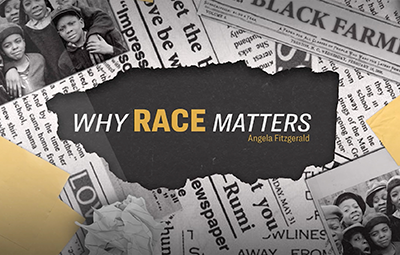
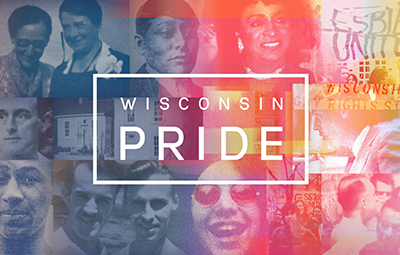



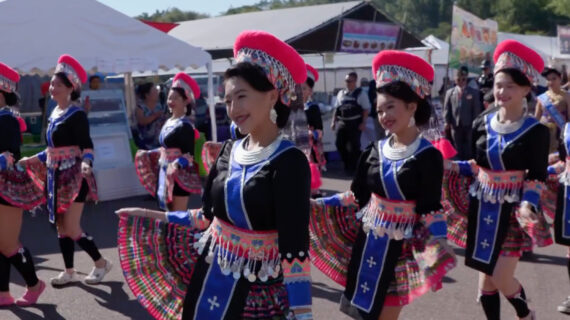



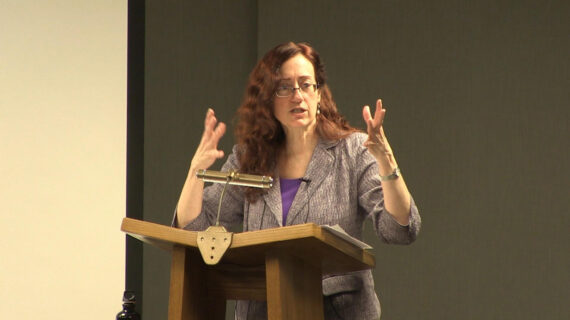
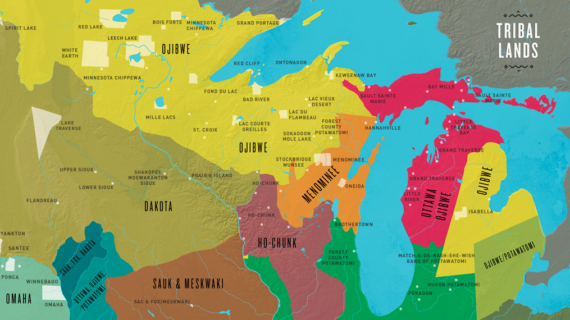
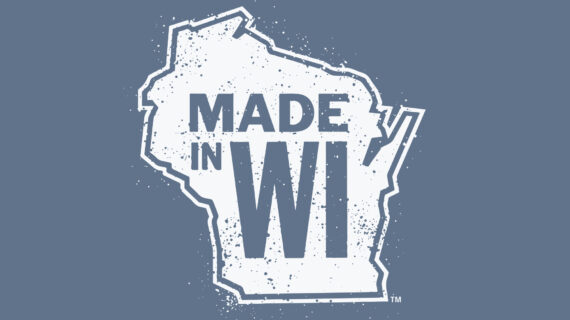

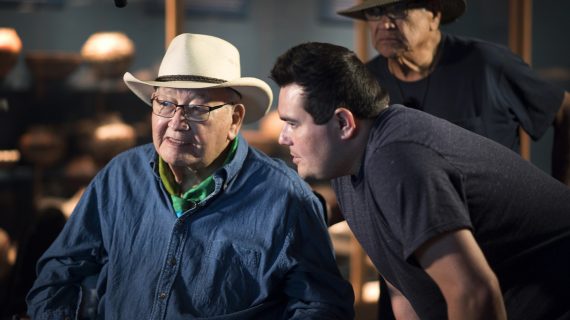



Follow Us